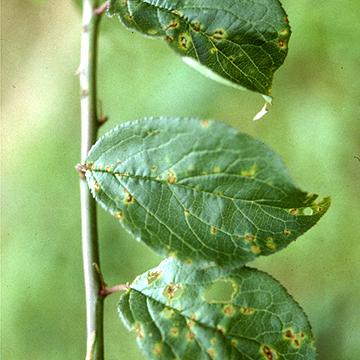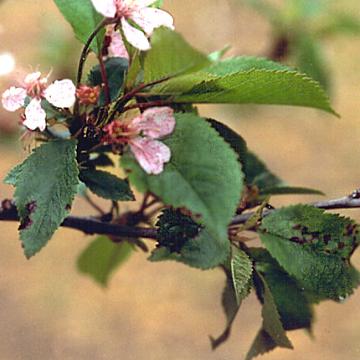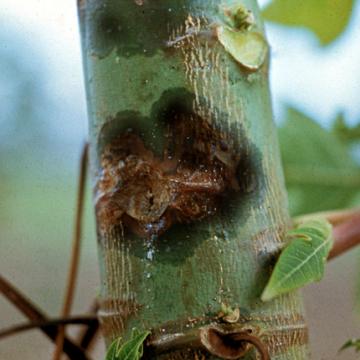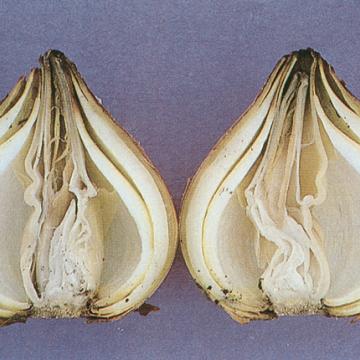DISEASE: Bacterial canker (Leaf spot)
HOST: Mume (Japanese apricot)
Leaves with spots surrounded by yellow halos.
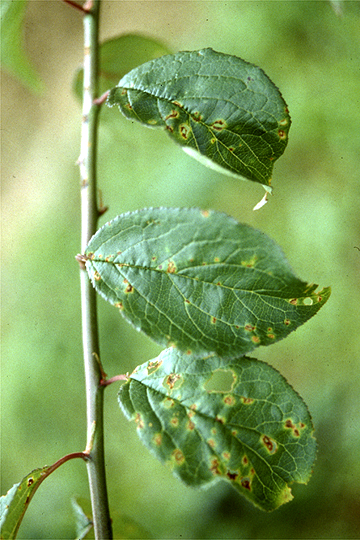
Bacterial canker (Leaf spot) | Mume (Japanese apricot)
DISEASE: Bacterial canker (Leaf spot)
HOST: Mume (Japanese apricot) (Prunus mume)
PATHOGEN: Pseudomonas syringae pv. morsprunorum
SOURCE: M. Goto
DISEASE: Bacterial canker
HOST: Cherry
Cherry with necrotic internal tissues and external symptoms of ooze (gummosis) caused by systemic infection.
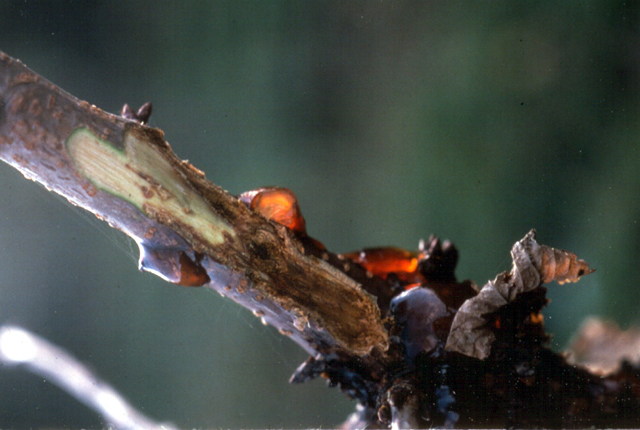
Bacterial canker | Cherry
DISEASE: Bacterial canker
HOST: Cherry (Prunus avium)
PATHOGEN: Pseudomonas syringae pv. morsprunorum
SOURCE: D. Funk, A. Alvarez
DISEASE: Bacterial canker
HOST: Cherry
Systemic infection of petioles and leaves.
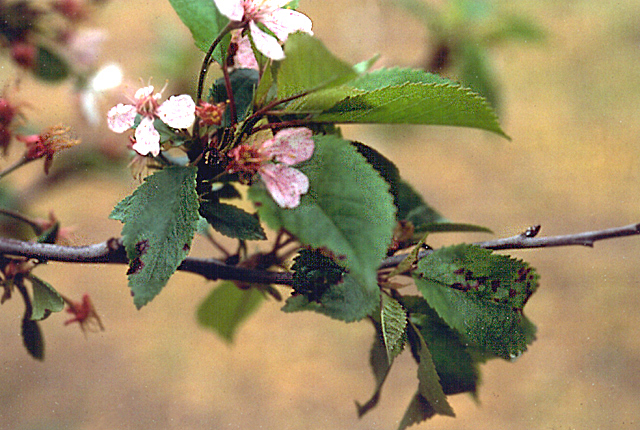
Bacterial canker | Cherry
DISEASE: Bacterial canker
HOST: Cherry (Prunus avium)
PATHOGEN: Pseudomonas syringae pv. morsprunorum
SOURCE: D. Funk, A. Alvarez
DISEASE: Bacterial mushy canker
HOST: Papaya
This disease (Micronesia) differs from bacterial decline by causing blackish, water-soaked, mushy cankers near or in leaf axils or on young stems.
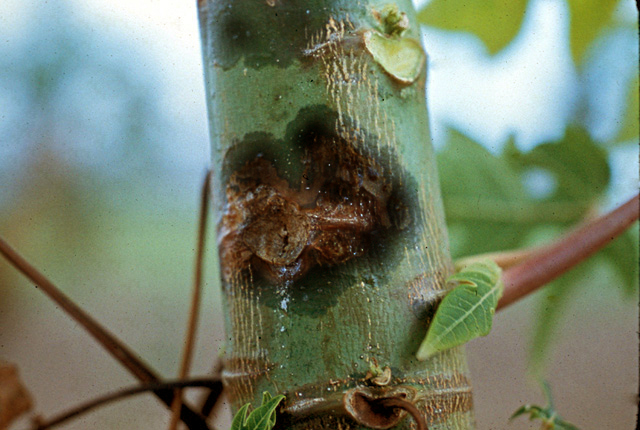
Bacterial mushy canker | Papaya
DISEASE: Bacterial mushy canker
HOST: Papaya (Carica papaya)
PATHOGEN: Erwinia sp.
SOURCE: E. Trujillo
DISEASE: Slippery skin
HOST: Onion
Rot progresses from the top of infected scales and eventually internal tissues rot. In early stages, the only external symptoms may be softening of the neck.
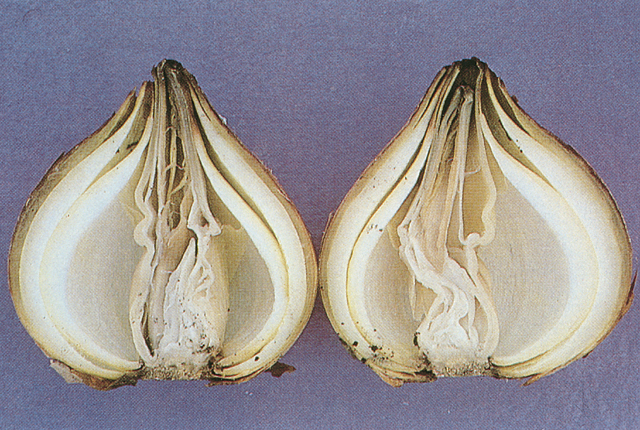
Slippery skin | Onion
DISEASE: Slippery skin
HOST: Onion (Allium cepa)
PATHOGEN: Burkholderia gladioli pv. alliicola
PATHOGEN SYNONYM: Pseudomonas gladioli pv. alliicola
SOURCE: H. Schwartz


